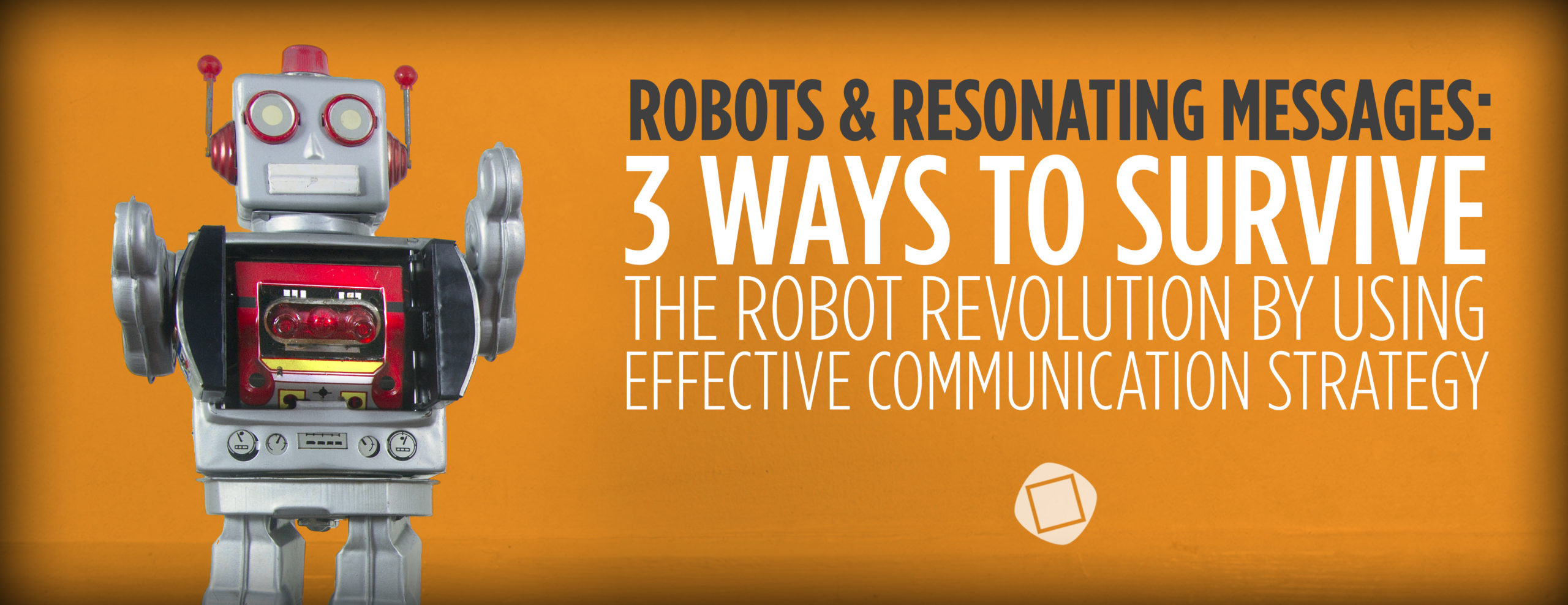Robots. Taking over the world.
While that may sound like the plot of Tom Cruise’s latest summer blockbuster, it’s actually just cold hard reality coming to a future near you. In a less dramatic and more realistic sense, technology always has been and will be one of the biggest driving forces in what changes the scope of our economy and where jobs are available.
As technology advances, electronic counterparts are replacing people. In a lot of industries, computer controlled systems have the ability to tackle the same job as Average Joe… only in a faster, easier, and cheaper manner. Think about it. Bank tellers? They’re mostly ATM’s now. Librarians? Just check an online database. Postmen? Hellooooo email!
In a recent article published by the Washington Post, David Tuffley discusses ways to stay employable in the ever-changing techno-business sphere. Citing Harvard Professor Howard Gardner’s booked called “Five Minds for the Future”, the article explores how future leaders who can champion skills based on around unique human connections and capabilities will be the safest.
At SquarePlanet, we liked what Tuffley and Gardner had to say on this matter. Per usual, we saw the opportunity to expand on it a bit more and share advice on not only how you can remain a consistently valuable asset in the whirlwind of technological advancements, but also how those lessons translate into valuable communication strategies:
1. Be Authentic and Human
There are some things a robot simply can’t do. There is no such thing as an algorithm for wit. Humor is not a responsibility we can ever expect from a computer. When it comes time to engage your audience and formulate an effective communication strategy, what will set you apart is relying on your very fundamental human nature.
A robot is programmed to analyze and regurgitate information. What there is no technological replacement for is natural human conversation. By directly engaging your audience with simple language and provocative ideas, you’ll make real connections. No matter what the topic or venue is, remember that the more authentically human you are, the more your message will resonate with everyone who hears it.
2. Tell Stories
The forecast for the future? HEAVY DATA EXPECTED. Good storytellers who know how to interpret, simplify and share that data, are the ones who will survive. There is huge value in the ability to synthesize incredible amounts of data into a clear, coherent message… and the best way to do that is through storytelling. The same lesson applies in crafting a communication strategy.
Whether it’s through a presentation, advertisement or word of mouth account, the most effective communication tells a compelling story. Storytelling is the core of what we do at SquarePlanet. It creates clarity from clutter. It’s something humans have done since the dawn of time and it will not only help you set yourself apart in the future, but will help you start communicating how you’ve always wanted to.
3. Embrace Technology
While the platforms for communication change over time, the necessity of a clear, impactful message does not. The ability to formulate a communication strategy that embraces newfound technology will only increase in demand. What does this mean? Learn how to talk in 140 characters. Tweet. Post. Share. But do it carefully and with the thought and consideration it warrants. Be concise and sharp with every message you put out into the world.
When you hear of a new social media platform or trending topic, figure out how it could help your message reach new audiences. The human connection in new technology isn’t lost, it just looks different. By leveraging emerging technology with the right message, you can still establish meaningful connections with people while not allowing yourself to be rendered obsolete.
The Bottom Line
As Bob Dylan famously sang, “The Times They Are A-Changin”. The fact is, the way things get done is constantly shifting and transforming. Technology continues to revolutionize the way we live our lives. The job market perhaps feels this impact greater than any. As the future unfolds and we continue to debate and develop new ways to make our lives more efficient and automated, it’s important to remember when developing a communication strategy that there is no substitution or imitation for the human mind. So, just as Howard Gardner pointed out, it’s in the interpretative and emotional connections that allow humans to communicate like nothing else can.
Share this article if you know someone who is stuck thinking like a robot and could use a lesson in trading their circuits for stories. If you’re ready to rethink how to communicate like the rest of us real living breathing human beings, give us a call – we love talking to humans.
[x_author title=”Who Wrote This Masterpiece?”]





0 Comments